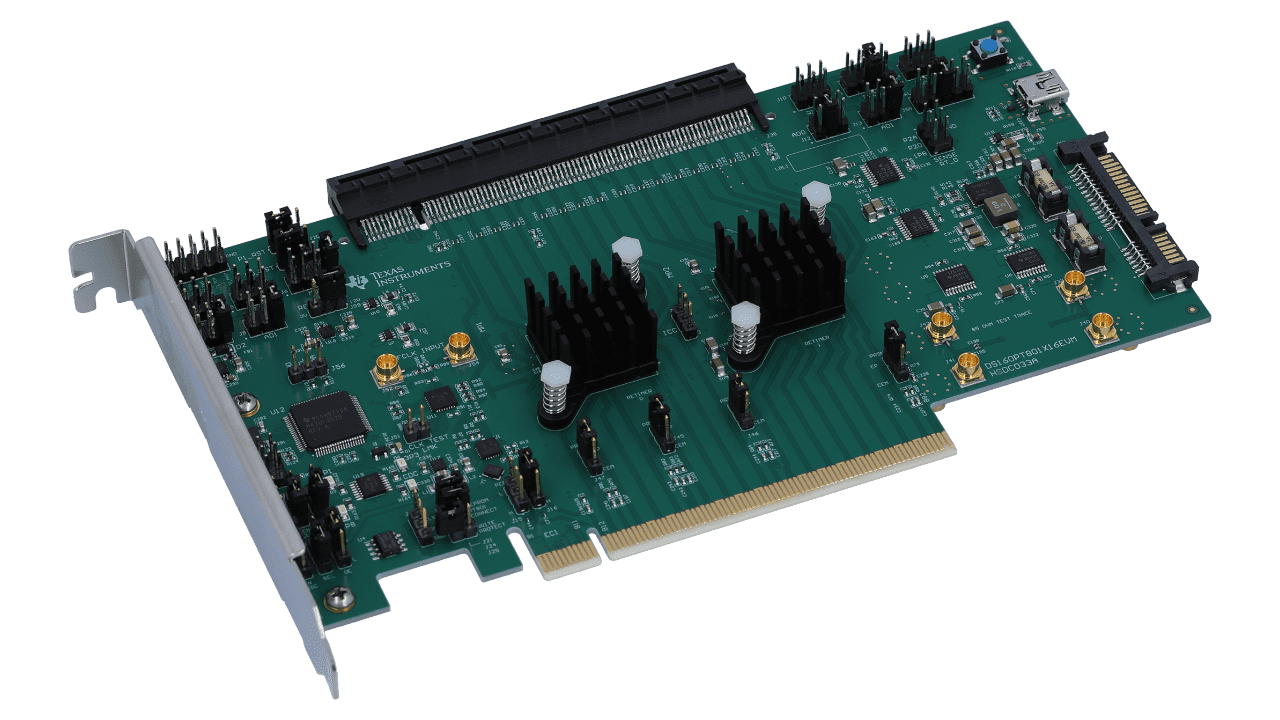SNLU254A November 2020 – July 2022 DS160PT801
Abstract
The DS160PT801X16EVM is a 16-lane PCIe riser card board intended to be used for evaluation of the Texas Instruments DS160PT801 PCIe Gen4 retimer. The EVM uses the 1x16 Card Electromechanical (CEM) connector to enable quick system testing in a standard x16 socket and a standard PCIe endpoint. The evaluation board may be used with the SigCon Architect software program to provide register control and status information from the DS160PT801 devices. Contact a local Texas Instruments representative to obtain the SigCon Architect.
 Figure 1-1 DS160PT801 EVM
Figure 1-1 DS160PT801 EVM